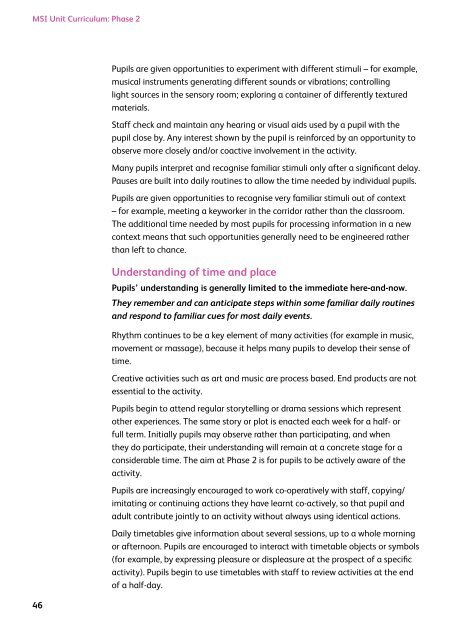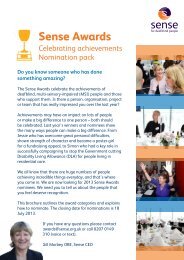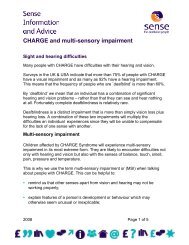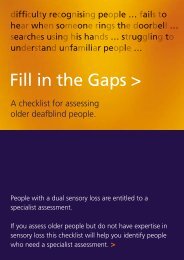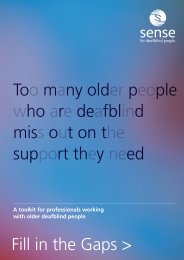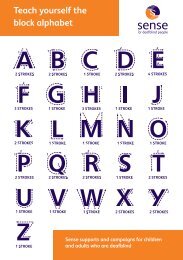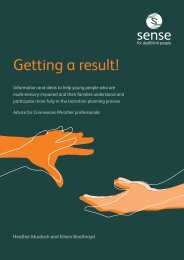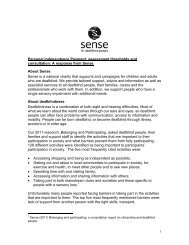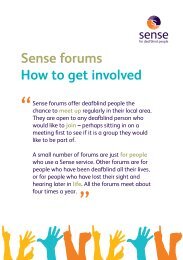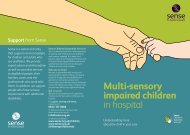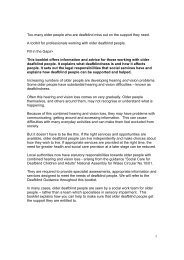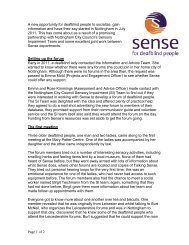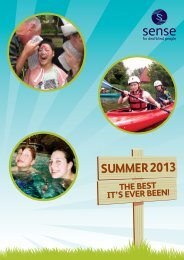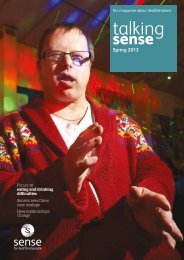MSI Unit Curriculum - Sense
MSI Unit Curriculum - Sense
MSI Unit Curriculum - Sense
Create successful ePaper yourself
Turn your PDF publications into a flip-book with our unique Google optimized e-Paper software.
<strong>MSI</strong> <strong>Unit</strong> <strong>Curriculum</strong>: Phase 246Pupils are given opportunities to experiment with different stimuli – for example,musical instruments generating different sounds or vibrations; controllinglight sources in the sensory room; exploring a container of differently texturedmaterials.Staff check and maintain any hearing or visual aids used by a pupil with thepupil close by. Any interest shown by the pupil is reinforced by an opportunity toobserve more closely and/or coactive involvement in the activity.Many pupils interpret and recognise familiar stimuli only after a significant delay.Pauses are built into daily routines to allow the time needed by individual pupils.Pupils are given opportunities to recognise very familiar stimuli out of context– for example, meeting a keyworker in the corridor rather than the classroom.The additional time needed by most pupils for processing information in a newcontext means that such opportunities generally need to be engineered ratherthan left to chance.Understanding of time and placePupils’ understanding is generally limited to the immediate here-and-now.They remember and can anticipate steps within some familiar daily routinesand respond to familiar cues for most daily events.Rhythm continues to be a key element of many activities (for example in music,movement or massage), because it helps many pupils to develop their sense oftime.Creative activities such as art and music are process based. End products are notessential to the activity.Pupils begin to attend regular storytelling or drama sessions which representother experiences. The same story or plot is enacted each week for a half- orfull term. Initially pupils may observe rather than participating, and whenthey do participate, their understanding will remain at a concrete stage for aconsiderable time. The aim at Phase 2 is for pupils to be actively aware of theactivity.Pupils are increasingly encouraged to work co-operatively with staff, copying/imitating or continuing actions they have learnt co-actively, so that pupil andadult contribute jointly to an activity without always using identical actions.Daily timetables give information about several sessions, up to a whole morningor afternoon. Pupils are encouraged to interact with timetable objects or symbols(for example, by expressing pleasure or displeasure at the prospect of a specificactivity). Pupils begin to use timetables with staff to review activities at the endof a half-day.


